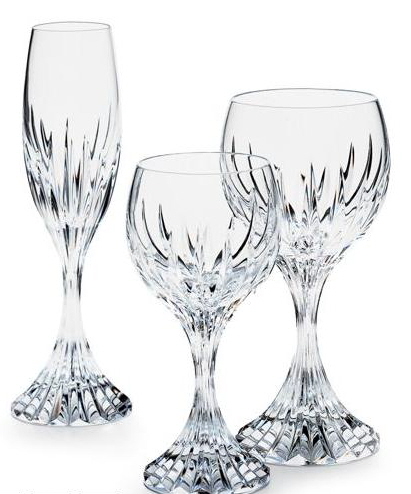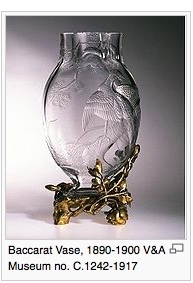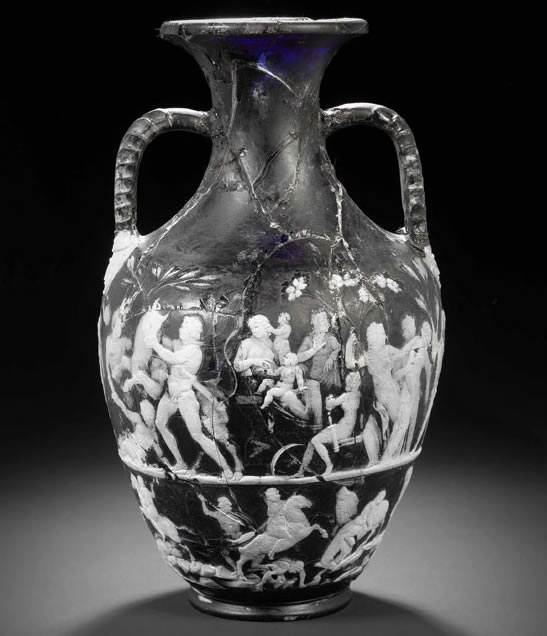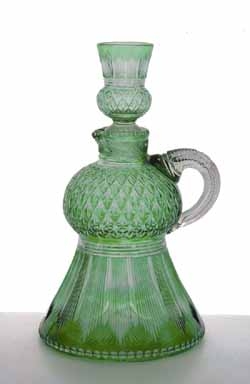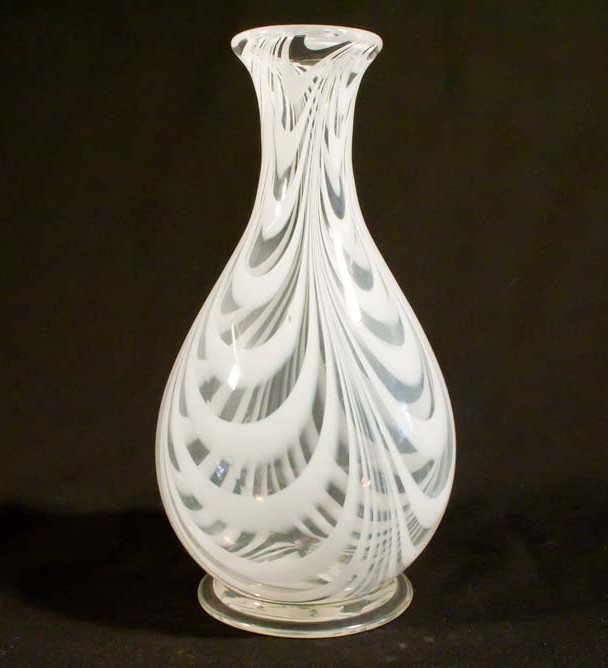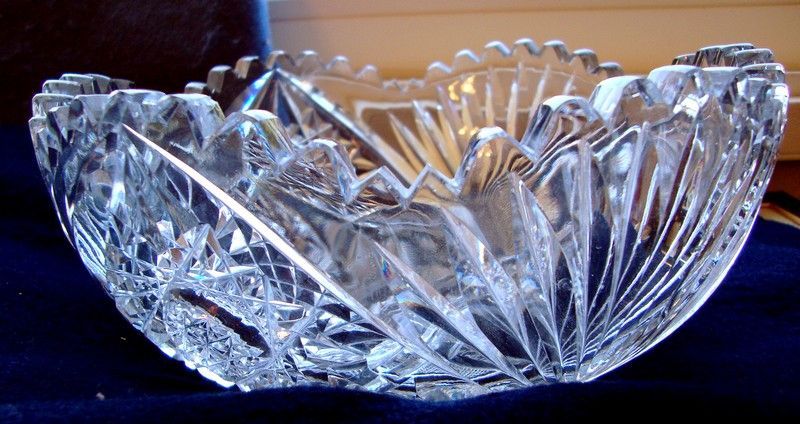Baccarat. The Compagnie des Cristalleries de Baccarat, Muerthe et Moselle, France, is one of France’s oldest and finest glass manufactories. Their infinitely varied activities range from architectural and gross ornamental pieces to dainty stemware. Baccarat decorative styles include numerous adaptations of prismatic forms and considerable use of a wider more sweeping type. In much of their ware they accept the purity of the crystal with little attempt at accentuation, permitting the decorative cuts to follow rather a design of limited prismatic effect.
The Baccarat artists in their cut crystal have completely over-stepped many of the traditional limitations imposed by glass, achieving a heightened vitality which emanates from subtly calculated sources, especially noticeable in the work of A. Bullet and G. Chevalier.
Saint Louis. The Verrerie de la Compagnie des Cristalleries de Saint Louis is a branch of the Baccarat firm. One of their specialties is a layered dark crystal glass. One of Galle’s pupils, an artist named Nicholas, has engraved much of this ware. The stamp of the Saint Louis works and the influence of Maurice Defrene are noticeably evident in the glass of the Paris shops.
Verlys was originated in France by the Societe Anonyme Holophane, for many years manufacturers of prismatic lighting glassware. Their first production of Verlys, about 1931, was the direct result of a plan for complete utilization of production capacity which was not employed in the manufacture of lighting glassware.
Verlys, which is of both blown and molded types, is essentially a decorative glass. For the most part it is lime base, though lead occasionally is used for technical purposes.
Colour within the glass-never applied colour-is their decorative means of enhancing molded and blown shapes. Heatherish purple vitalizes a thistle motif; an aqueous opal escence lends realism to water subjects, such as lily designs and sea shells, or highly stylized fish and water fowl; while other things of nature are crystallized in amber, topaz, rose and blues, through the magic of the Verlys palette.
Although relatively new in the field of novelty glass, Verlys has achieved a respected position.
History of Baccarat Crystal
In 1764 King Louis XV of France gave permission to found a glassworks in the town of Baccarat in the Lorraine region in eastern France to Prince Bishop Cardinal Louis-Joseph de Laval-Montmorency (1761-1802). Production consisted of window panes, mirrors and stemware until 1816 when the first crystal oven went into operation. By that time over 3000 workers were employed at the site.
1817-1867
Baccarat received its first royal commission in 1823. This began a lengthy line of commissions for royalty and heads of state throughout the world.
In 1855 Baccarat won its first gold medal at the World’s Fair in Paris.
Baccarat first began marking its work with a registered mark in 1860. The mark was a label affixed to the bottom of the work. In the period 1846-1849 Baccarat signed some of their high quality glass millefiori paperweights with the letter B and the year date in a composite cane. A special paperweight dated 1853 was found under the cornerstone of a bomb damaged church in Baccarat when construction recommenced after World War 2.
The crystal production expanded its scope throughout this period, and Baccarat built a worldwide reputation for making quality stemware, chandeliers, barware, and perfume bottles.
1867-1936
The Imperial Era ended in 1867 with the defeat of Napoléon III. Influences outside of France began to have a stronger influence on Baccarat’s work during this era, particularly imports from Japan.Strong growth continued in Asia for Baccarat.One of the strongest production areas for Baccarat was perfume bottles, and by 1907 production was over 4000 bottles per dayIn 1936 Baccarat began marking all of its works via acid or sandblasting.
1936—Present
Baccarat created an American subsidiary in 1948 in New York City. By 2007 there were stores in Chicago; Costa Mesa; Dallas; Houston; Greenwich, Connecticut; Honolulu; New York; Troy, Michigan; San Francisco; Palm Desert, California; Las Vegas; and Atlantic City. A 12th location is set to open in Atlanta in 2010.
A retrospective was held in 1964 at the Louvre Museum to celebrate the 200th anniversary of the crystal works. In 1993, Baccarat began making jewelry and in 1997 the company expanded into perfume. In 2003, Baccarat relocated to 11, place des Etats-Unis in Paris.
Source: Wikipedia

